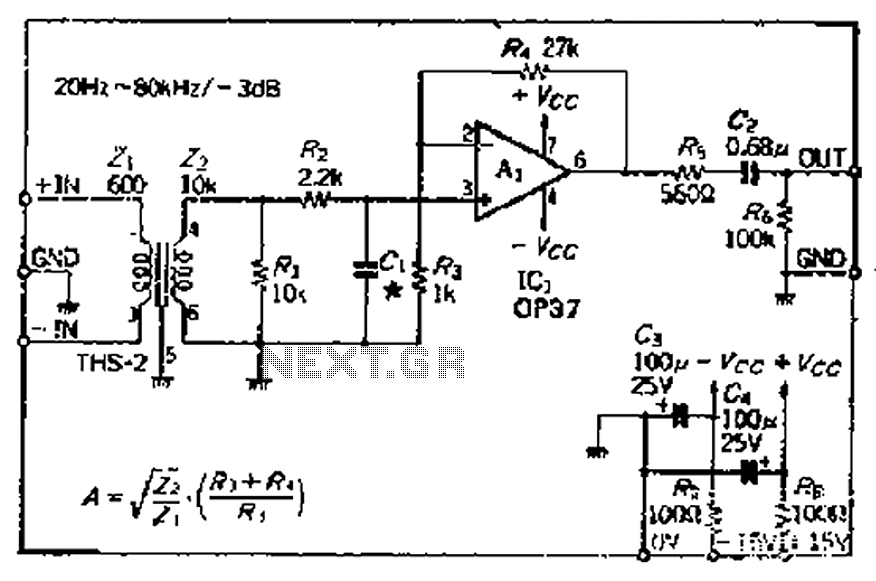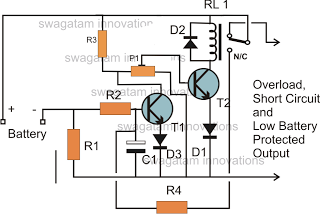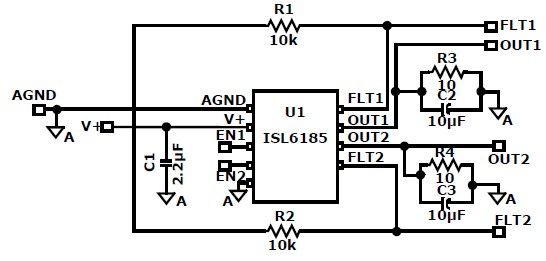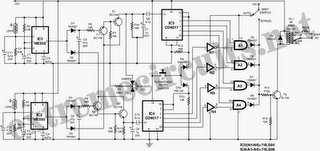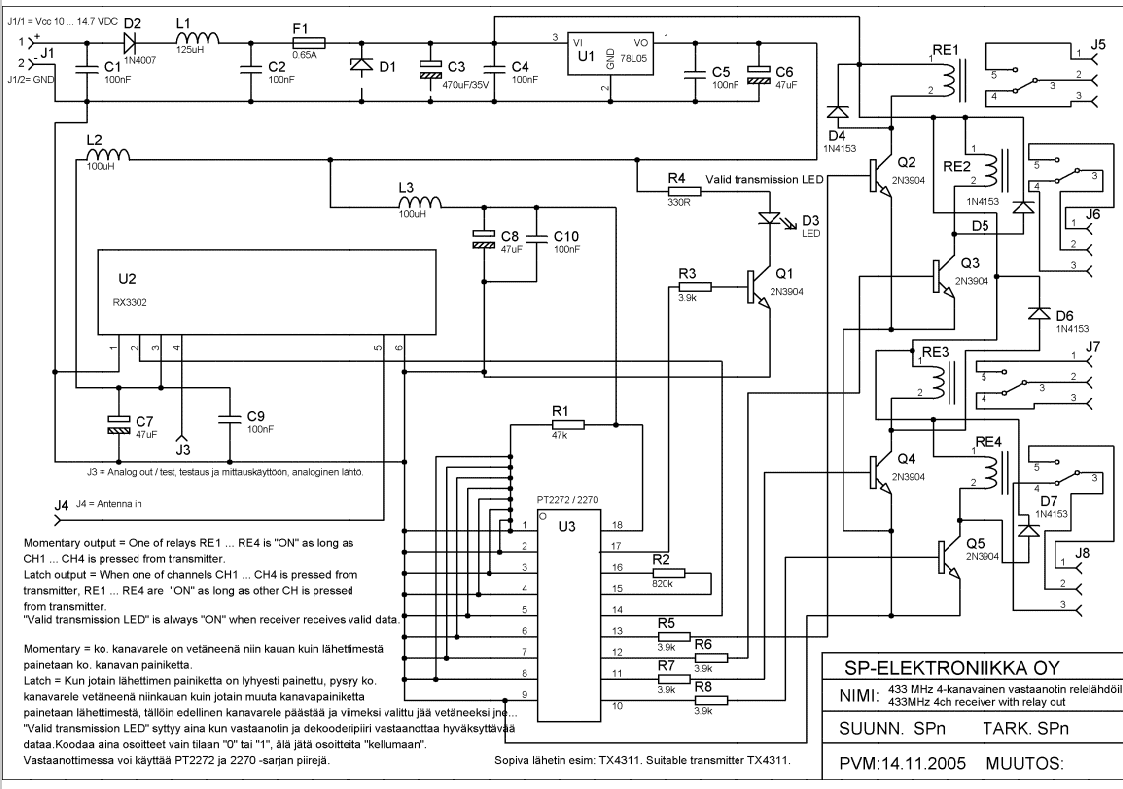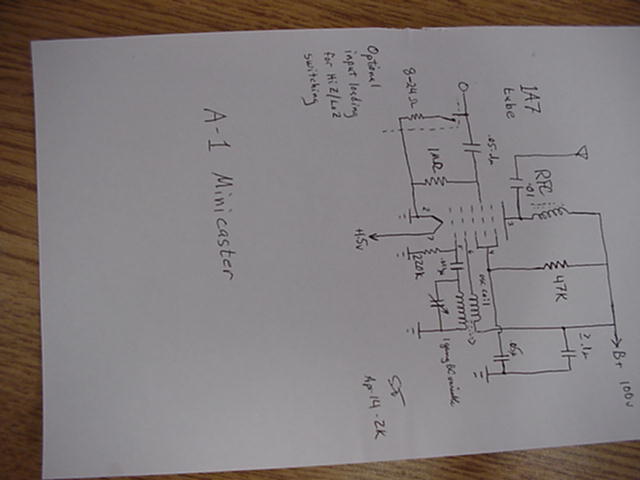
tv transmitter circuit
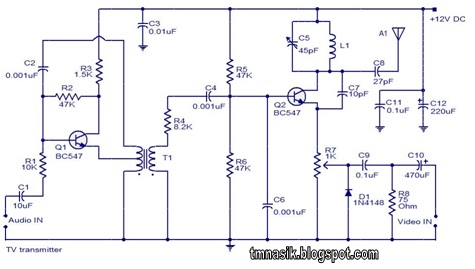
The TV transmitter circuit described utilizes UK standard 1 FM modulation for audio and PAL modulation for video. The audio signal intended for modulation is first amplified using transistor Q1 and its associated components. Transistor Q2 serves dual purposes: generating the carrier frequency and performing modulation. The pre-amplified audio signal is supplied to the base of transistor Q2 for the modulation process. A tank circuit, formed by capacitor C5 and inductor L1, is responsible for generating the carrier frequency. The video signal is introduced to the emitter of transistor Q2 through potentiometer R7 for modulation. The resulting modulated composite signal, which includes both audio and video, is transmitted via antenna A1. This TV transmitter circuit can operate on a 12V DC supply, which can be provided by either a regulated power supply or a battery. Using a battery is recommended as it typically reduces noise and enhances performance. If a DC power supply is employed, it must be well-regulated and free of noise.
The described TV transmitter circuit is designed to function effectively within the parameters of UK broadcasting standards, ensuring compatibility with existing television reception systems. The use of FM modulation for audio allows for a robust transmission, minimizing noise and interference, which is critical for maintaining sound quality. The PAL video modulation is standard for video broadcasting, ensuring that the transmitted video signal adheres to established formats for compatibility with TV receivers.
Transistor Q1 operates as a preamplifier, boosting the audio signal before it is fed into the modulation stage. The choice of components around Q1, such as resistors and capacitors, is crucial for setting the gain and frequency response of the audio signal, which directly influences the quality of the transmitted sound.
Transistor Q2 not only modulates the audio signal but also generates the carrier frequency necessary for transmission. The tank circuit, consisting of capacitor C5 and inductor L1, is tuned to resonate at the desired frequency, which is vital for effective signal transmission. The careful selection of these components affects the stability and efficiency of the carrier generation.
The inclusion of potentiometer R7 allows for fine-tuning of the video signal level before it is fed into the modulation stage. This adjustability is essential for achieving the right balance between the audio and video components, ensuring that neither overwhelms the other in the composite output.
The antenna A1 plays a critical role in transmitting the modulated signal over the airwaves. The design and placement of the antenna can significantly affect the transmission range and quality of the received signal.
Power supply considerations are also paramount in this circuit. A stable 12V DC supply is necessary to ensure consistent operation of the circuit components. The recommendation to use a battery highlights the importance of reducing electrical noise, which can interfere with the modulation process and degrade the quality of the transmitted signal. A well-regulated power supply is essential if a DC power source is used, as fluctuations in voltage can lead to performance issues.
Overall, this TV transmitter circuit represents a comprehensive approach to broadcasting, incorporating essential electronic principles and components to achieve effective transmission of audio and video signals.The TV transmitter circuit given here uses UK standard 1 FM modulation for sound and PAL for video modulation. The audio signal to be modulated is pre-amplified using the transistor Q1 and associated components. The transistor Q2 has two jobs: production of carrier frequency and modulation. The pre-amplified audio signal is fed to the base of tran sistor Q2 for modulation. Capacitor C5 and inductor L1 forms the tank circuit which is responsible for producing the carrier frequency. The video signal is fed to the emitter of transistor Q2 via POT R7 for modulation. The modulated composite signal (audio+video) is transmitted by the antenna A1. This TV transmitter circuit can be operated from 12V DC. Either a 12V DC power supply or a battery can be used for the purpose, using a battery will surely reduce noise and improve the performance.
If you are going with a DC power supply, then it must be well regulated and free of noise. 🔗 External reference
The described TV transmitter circuit is designed to function effectively within the parameters of UK broadcasting standards, ensuring compatibility with existing television reception systems. The use of FM modulation for audio allows for a robust transmission, minimizing noise and interference, which is critical for maintaining sound quality. The PAL video modulation is standard for video broadcasting, ensuring that the transmitted video signal adheres to established formats for compatibility with TV receivers.
Transistor Q1 operates as a preamplifier, boosting the audio signal before it is fed into the modulation stage. The choice of components around Q1, such as resistors and capacitors, is crucial for setting the gain and frequency response of the audio signal, which directly influences the quality of the transmitted sound.
Transistor Q2 not only modulates the audio signal but also generates the carrier frequency necessary for transmission. The tank circuit, consisting of capacitor C5 and inductor L1, is tuned to resonate at the desired frequency, which is vital for effective signal transmission. The careful selection of these components affects the stability and efficiency of the carrier generation.
The inclusion of potentiometer R7 allows for fine-tuning of the video signal level before it is fed into the modulation stage. This adjustability is essential for achieving the right balance between the audio and video components, ensuring that neither overwhelms the other in the composite output.
The antenna A1 plays a critical role in transmitting the modulated signal over the airwaves. The design and placement of the antenna can significantly affect the transmission range and quality of the received signal.
Power supply considerations are also paramount in this circuit. A stable 12V DC supply is necessary to ensure consistent operation of the circuit components. The recommendation to use a battery highlights the importance of reducing electrical noise, which can interfere with the modulation process and degrade the quality of the transmitted signal. A well-regulated power supply is essential if a DC power source is used, as fluctuations in voltage can lead to performance issues.
Overall, this TV transmitter circuit represents a comprehensive approach to broadcasting, incorporating essential electronic principles and components to achieve effective transmission of audio and video signals.The TV transmitter circuit given here uses UK standard 1 FM modulation for sound and PAL for video modulation. The audio signal to be modulated is pre-amplified using the transistor Q1 and associated components. The transistor Q2 has two jobs: production of carrier frequency and modulation. The pre-amplified audio signal is fed to the base of tran sistor Q2 for modulation. Capacitor C5 and inductor L1 forms the tank circuit which is responsible for producing the carrier frequency. The video signal is fed to the emitter of transistor Q2 via POT R7 for modulation. The modulated composite signal (audio+video) is transmitted by the antenna A1. This TV transmitter circuit can be operated from 12V DC. Either a 12V DC power supply or a battery can be used for the purpose, using a battery will surely reduce noise and improve the performance.
If you are going with a DC power supply, then it must be well regulated and free of noise. 🔗 External reference
